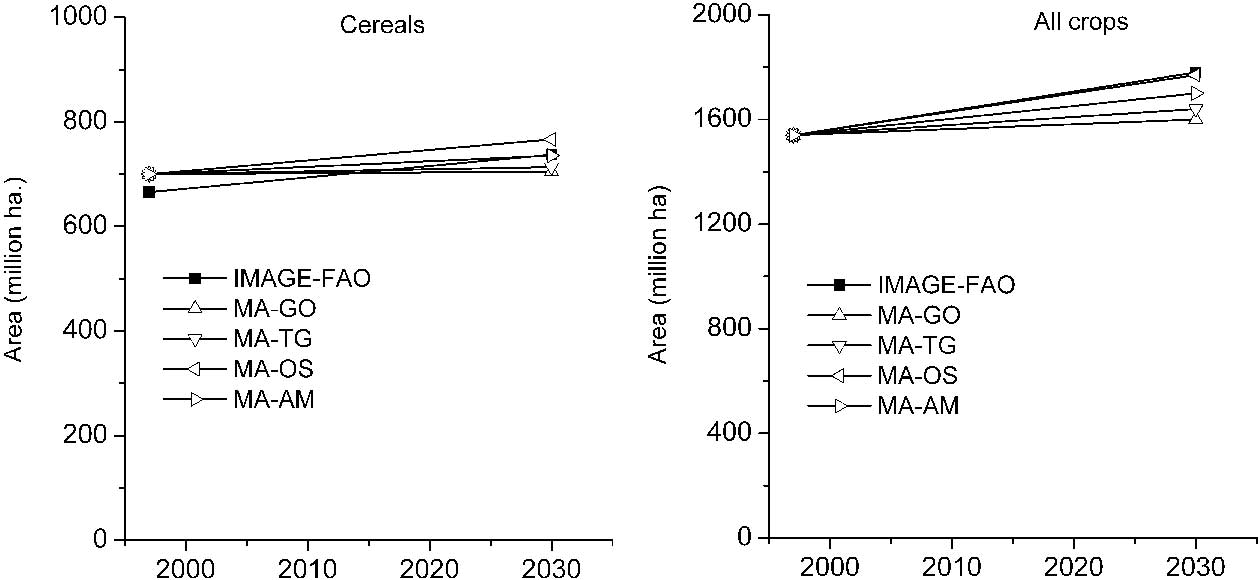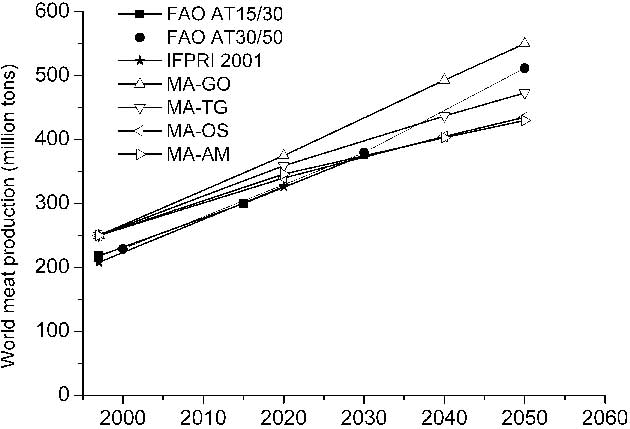
Figure 4-32. Indication of factors underlying production growth
in selected scenarios. Source: MNP, 2006.
Note: FAO numbers refer to IMAGE implementation.

Figure 4-33. World meat production in selected scenarios. Source: MNP, 2006.
be important: e.g., increasing protection of forests and strategies to mitigate climate change may both result in encouraging less deforestation and reforestation initiatives to offset energy related greenhouse gas emissions. The resulting trends in forested areas are presented in the MA for forests as a whole. The MA scenarios mostly show a further decline in forest area, but at a much slower rate than historically. In fact, the slow global deforestation trend is a result of a net reforestation in temperate zones, and a net deforestation in tropical areas. The slower deforestation trend is a direct result of the lower rate of expansion of agricultural areas coupled with greater forest conservation efforts.
Fisheries. Potential trends in world fisheries are discussed in qualitative terms in the FAO assessment, while the MA provides some projection for world fish consumption. Both assessments indicate that production of wild capture fisheries is approaching (or has passed) its sustainable limits, indicating that no real increase is expected. This implies that any growth in production will need to come from aquaculture (which is already the fastest growing component of world fisheries; especially in developing countries). It should be noted, however, that currently aquaculture mostly relies on feed that is provided by wild capture fisheries and can also cause serious pollution. Further growth, therefore, relies on finding sustainable ways to increase aquaculture. The MA reports both more conservative views (supported by ecological models) and more optimistic models (supported by agroeconomic projections). The FAO assessment presents a similar open-ended view on the future of aquaculture, indicating growth is likely to occur, but provided sustainable sources for feed are found.
4.5.2.2 Changes in food distribution and delivery
As indicated earlier, the amount of information on how other parts of the food system may change in the future is far less elaborated than the information on production systems. Based on the driving forces discussed earlier in this chapter,